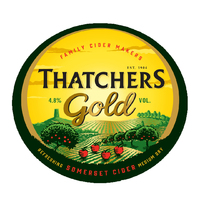Club
cricket can have its traumas at first for the young cricketer
who knows his limitations but loves playing the game.More
often than not it is as difficult for a boy who has recently
left school to persuade the adult powers to give him a
fair crack of the whip as it is for the aspiring professional
at a higher level. Those who have played faithfully for
the club over the years may have lost their speed in the
field, their fire with the ball or their flair with the
bat, but the game means much to them and they have no
desire to lose their prime place in the batting order
or their expectation of a regular bowl. Often, indeed,
the immediate interests of the club are better served
by the old-stagers, because it takes time for a young
cricketer to adapt to adult cricket.Everything is very
different from the school game. The humour is bawdy. Everyone
has his leg pulled. The fast bowlers seem faster - often
are faster-and are certainly larger and stronger. Pitches
are seldom so reliable as a well-tended school pitch.
Innocent-looking deliveries bowled by bald-headed men
with large paunches turn out to possess hidden devils.
Umpires are less predictable. It is not as safe as it
looks to take a single to the old boy in the yellowing
sweater with a limp: he turns out to have a throw like
a rifle-shot. When an opportunity comes to bowl, the young
fast bowler's nasty lifting deliveries are nudged away
to the square-leg boundary with the greatest of ease by
a batsman who looks as though he's never been taught any
technique at all, and the young spinner's subtly flighted
off-breaks are driven to all parts by a tall chap in a
striped cap who also turns out to be a brilliant hooker
and puller whenever the ball is pitched shorter. It is
after the game is finished, however, that the differences
are most marked. The school game ends with a rapid change
back into uniform and resumption of schoolboy life. But
for adults, the day has only just begun when stumps are
drawn.
From the most bucolic village to the most sophisticated
league, the drinks in the bar are what count. There it
is that the swanky, loud-mouthed so-and-so of a fast bowler
turns out to be a most charming solicitor of high repute,
and the self-effacing batsman who never said a word when
he was given out caught behind off the buckle of his pad
emerges as a brilliant raconteur of blue stories. There
it is that players who have not had much luck slowly drown
the pain of failure, while those who have done well in
the match discuss over and over again the three cover-driven
fours .in one over which turned the game-"You can
bat in your sleep on this pitch" -or the brilliant
catch which was "just one of those ones which stuck".
A marvellous camaraderie spreads around friend and foe.
Two decades ago the cheerful swapping of stories, post-mortems
on the game, discussions on why England's Test team was
such a dead loss and sundry other meanderings round a
cricket theme used invariably to take place in the pub.
Nowadays even small village clubs raise money by fetes,
whist-drives, raffles, donkey-derbies and celebrity matches,
and perhaps a loan from the National Playing Fields Association
in order to build themselves a bar. It isn't really quite
the same, but the takings at the bar help to keep down
match-fees to a feasible level. There are more women to
be seen drinking with the cricketers these days, too,
although they tend to be either starry-eyed fiancees who
have not yet learned to be bitter about how much cricket
their beloved plays, or more elderly wives whose children
have left the nest and who long ago gave up trying to
persuade the old man that there are other ways to spend
a warm Saturday evening in summer than sinking pint after
pint of bitter from the "jug". The jug,
filled up first by the home skipper, then by the opposing
captain, circulates briskly. Traditionally, anyone who
has got five wickets or fifty runs also pays for a jug,
so it is a bad evening, or rather a bad match, if it doesn't
get filled up at least six times.
To a temperate youth all this takes some getting used
to, but playing club cricket at any level means accepting
that it is a man's world. It is not - or not usually -
a case of a cricket match being an excuse for lingering
on after the match to talk about cricket. Perhaps there
are indeed better things to do on summer evenings but
there are worse things too, as any policeman will tell
you, and drinks with the opposition after the game are
a part of the ritual. They help to give cricket its unique
character and friendliness. The tradition goes back to
the earliest days: any student of Hambledon will know
how important was the Bat and Ball Inn besides Broadhalfpenny
Down to those larger-than-life characters who played in
the club's great days of the 1770s and 1780s. Indeed the
club's "head and right arm", Richard Nyren,
was the innkeeper and the inn, in effect, was the clubhouse:
"Then fill up your glass, he's the best
that drinks most.
Here's the Hambledon Club! - who refuses the toast?"
In more recent times fear of the breathalyzer has happily
prevented many excesses, and the lure of television along
with the emancipation of women, and in many cases the
pressures of work, have cut down the time spent at the
club bar. But cricket maintains its genuine social role:
in James Pycroft's Victorian novel Elkerton Rectory, the
Reverend Henry Austin records: "My cricket club was
designed to encourage sympathy between man and man, however
wide their ranks might be asunder, and most admirably
did it conduce towards this end". It still does,
although village cricket these days embraces a wider range
of professions than it used to. It is many years now since
a batsman walked out in a village match in Somerset with
the club's only pad strapped to his right leg instead
of his left. "Bert", said the opposing village's
fast bowler when he saw one of his old adversaries thus
clad, "you've got your pad on the wrong leg".
"Ah", said Bert, in all seriousness. "So
I 'ave. But t'will be on the right one when I get up t'other
end".
Reproduced with the kind permission of J. M. Dent &
Sons Ltd. |






